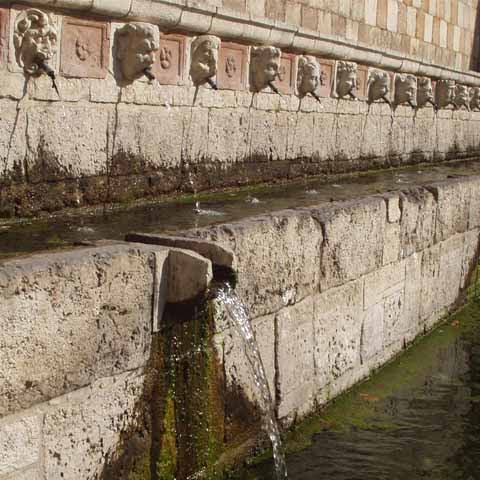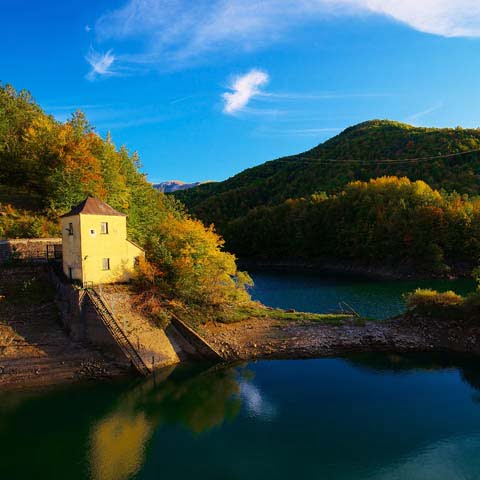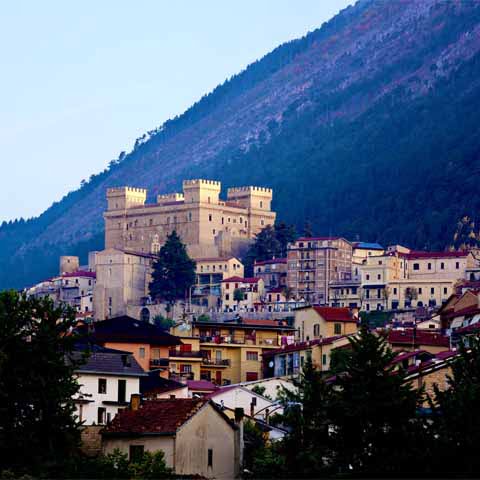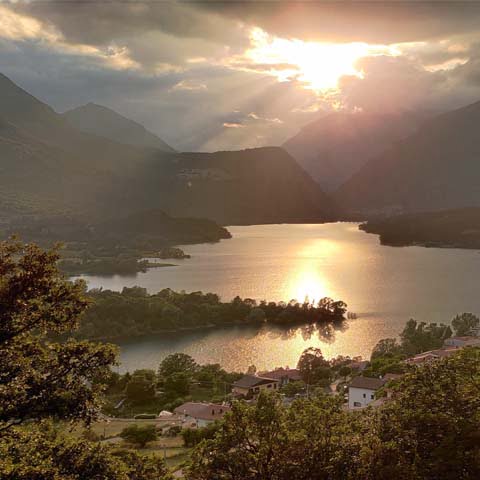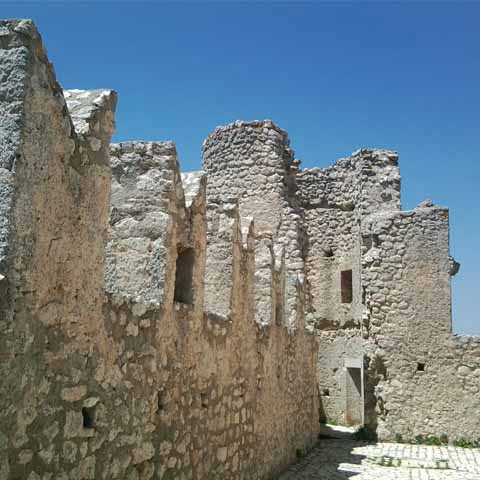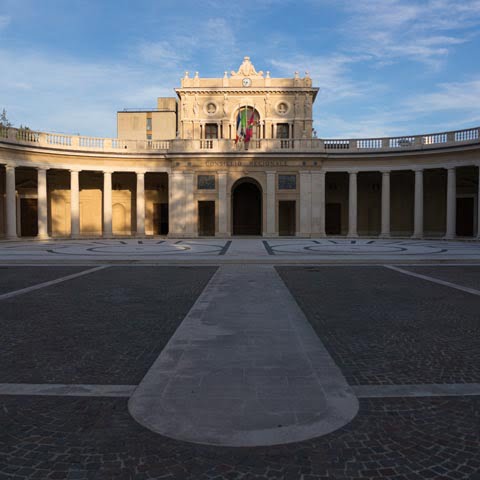The landlocked city of L’Aquila is one of breathtaking and picturesque natural scenery. This mountain city that lies between the peaks of the Apennine Mountain range is the capital of the region of Abruzzo and the capital of the Province of L’Aquila. The warm people, delicious food, and historical culture make L’Aquila the place to be in Italy.
One of the best things about touring the city of L’Aquila is that it is relatively unknown as a tourist town, which allows its visitors to freely roam and take in the things that make the city one of Italy’s best kept secrets without fighting the crowds. With a thriving central open-air market, beautifully crafted fountains, and historical architectural landmarks, this charming city has something for everyone.
FESTIVALS AND EVENTS
FESTIVALS AND EVENTS
The primary festival in L’Aquila is Perdonanza Celestiniana which means Celestian Pardoning. The festival takes place annually at the end of August and has done so for more than seven hundred years. In the late thirteenth century Pietro da Morrone is said to have been crowned Pope directly in front of one of the doors to the Basilica of Santa Maria di Collemaggio. The door has since been referred to as the Holy Door. As a part of the pope’s crowning ceremony, a pardon of sins was declared for anyone visiting the church in repentance from that point forward. To celebrate this historical religious event, the city gathers for the Procession of the Bull of Celestino V through the streets of the city. The procession is quite large with hundreds of people participating, some of which are military, civic, or religious authorities. The procession ends at the Basilica of Santa Maria di Collemaggio where there is a religious reading and the rite of opening the Holy Door is performed.
OUTDOOR ACTIVITIES
Because of L’Aquila’s landlocked mountain location, visitors enjoy fabulous skiing and hiking opportunities just outside the city limits. The area receives quite a bit of cold weather and snow during the year which lends itself to amazing downhill and cross-country skiing opportunities in the winter. During the warmer months, visitors may enjoy hiking through the surroundings of the city and amongst other peaks in the Apennine Mountains for some truly spectacular views.
The nearby city of Amiternum is a rare and remarkable city of historical ruins. The ancient city partially survived many owners and regimes over the centuries. While part of the establishment has worn away and deteriorated, some of it still remains. Visitors can view at least partial remains of the amphitheater, theater, baths, and forums. As for the city’s historical significance, it is believed to be the birthplace of renowned historian, Gaius Sallustius Crispus, more commonly known as Sallust, in 86 BC.
Travelers can enjoy the natural beauty of the Abruzzo region at the Riserva Naturale del Vetoio. This nature reserve is located along a small lake. Amid the greenery, there is also a small church, Chiesetta della Madonna della Neve, dedicated to Our Lady of the Snow, that features medieval and Baroque architecture.
From nearly every part of L’Aquila it is possible to catch sight of Monte Luco hill, which features a dense pine grove. Locals and visitors alike enjoy taking long walks through the pine grove and following the trail to the peak of the hill where stunning panoramic views of the city and surrounding area can be admired.
INDOOR ACTIVITIES
Be transported to a different time period with a visit to Forte Spagnolo, which translates as Spanish Fort. The structure is actually a sixteenth century castle that has a unique story of construction. Building initiated with the intention of creating a strong fortress in the highest point of the city for clear views of approaching enemies. However, the vision became grander than what could be afforded, making construction too expensive and the reason why some parts of the castle are still incomplete today. The castle itself is impressive with its medieval design, but the stone bridge walkway to the main entrance is considered by many to be the true work of art.
Inside the Forte Spagnolo is the Museo Nazionale d’Abruzzo. The National Museum of Abruzzo is full of exhibits that illustrate the history of the region. In particular, the exhibits include religious art, pre-Roman and Roman artifacts, medieval and modern paintings, dinosaur bones, and more. The museum’s displays are interesting and give visitors a clearer picture of how the region has evolved over the years, yet, for many, the major wow factor is the fact that the museum is located inside of a real castle.
There are several historical churches and basilicas in the city of L’Aquila, but perhaps one of the best known is the Basilica of Santa Maria de Collemaggio. One of the largest churches in Abruzzo, the thirteenth century structure is simply designed with a combination of Romanesque and Gothic influence. The façade features a series of patterns created by light and pink colored stone tiles that can resemble a flower pattern from a distance. Three rose windows sit high above three wooden doors featuring an ornately designed arched overhanging and entryway. The interior of the church is equally impressive and continues the arch and tile motif in grand style. Pope Celestine V is said to have been crowned at the basilica itself and his tomb can still be found here.
FAMILY
L’Aquila is very much a city of community. For that reason, Piazza del Duomo is one of the most preferred meeting places for residents and visitors alike. It is the largest square in the city and among the largest squares in Italy. The piazza is home to several grand buildings with stunning architecture and a beautifully crafted sculpture and water fountain. Typically, this main square offers a daily open-air market from morning to around lunchtime in which shoppers can find fresh produce and wares unique to this region.
KIDS
Just outside the city proper is Parco del Sole. The park is a respite from the busy hub of L’Aquila’s historic center, and is adored by local children. In addition to space to run and roam, the park features several different play and game areas perfect for children. When visiting the park, be sure to pause for a few moments and take in the gorgeous mountain and city views.
UNIQUE EXPERIENCES
The Fontana delle 99 Cannelle is a work of art unique to the city of L’Aquila. This Fountain of 99 Spouts does not resemble what many think of as a traditional fountain. Created in the thirteenth century, the fountain has a trapezoidal shape with horizontal rows of fountain spouts that sit directly above small pools. Note that there were originally only ninety-three water spouts here, with the six additional water spouts being added later to create a totally of ninety-nine. The stone tiling above the fountains that stretches upward several feet along with the design of the water spouts themselves, make this fountain an absolute must-see. A common custom is for visitors to L’Aquila to count each of the spouts on the fountain.
Whether you enjoy wandering the city of L’Aquila to soak up the culture and ambiance or if you enjoy scaling the adjacent mountains to find some of nature’s most breathtaking beauty, L’Aquila welcomes you and invites you to make the city your home away from home.
*SPECIAL NOTE: The information contained in this page refers to L’Aquila’s state prior to the 2009 earthquake. Some sites and historical monuments may still be under repair.
Travel Guides
The Abruzzo Region of Italy
The Cities of Abruzzo, Italy
